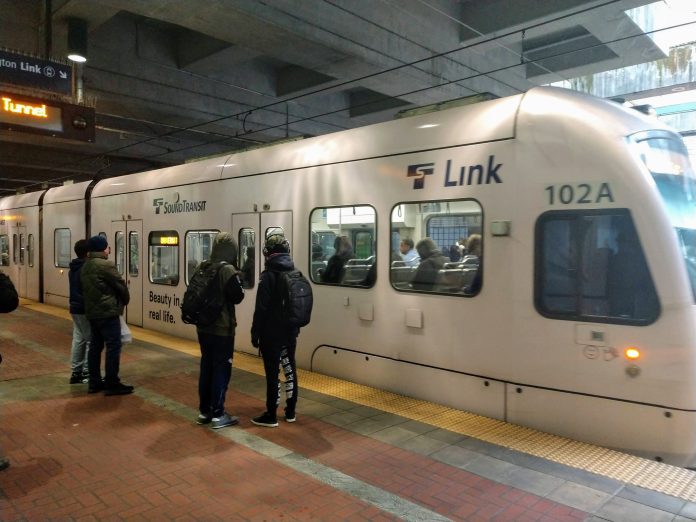Sound Transit has some big decisions on the horizon regarding light rail alignments for Ballard Link and West Seattle Link. Having just released Initial Assessment results, the agency is inviting people to submit comments as the final alternatives to be studied in the Environmental Impact Statement (EIS) are narrowed and selected.
People hoping for a tunnel under Salmon Bay to connect the heart of Ballard got some good news. The cheaper Ballard tunnel options are predicted to cost only $350 million more than the Representative Project. Another tunnel option, pegged at $450 million, would put Ballard Station at 20th Ave NW, closer to the center of Ballard, rather than skirting the core with a station at 14th Ave NW or 15th Ave NW, as two other options did, respectively.
Meanwhile, Sound Transit projects a fixed high-bridge would cost $100 million more than the baseline movable bridge. Most advocates agree a fixed bridge should be the minimum. (A fixed bridge option to reach 20th Ave NW wasn’t mentioned, despite the shorter crossing distance west of Fisherman’s Terminal.) Designing a light rail bridge that needs to open regularly would be folly, especially once Ballard Link is extended northward and train frequencies increase.

Ballard Options: 20th Ave Tunnel Emerges
In addition to the Thorndyke Portal option with a tunnel just west of the Ballard Bridge, Sound Transit also studied a BNSF Portal option that veers farther north and crosses around 21st Ave W. However, the Initial Assessment found this options adds $750 million to the budget–$300 million more than the other tunnel alignment. Since the BSNF Portal option is also curvier and thus likely a little slower, it appears a poor fit. The Thorndyke Portal option looks very promising, though, especially if further analysis reveals the cost differential is less than it appears now. With protected salmon runs in Salmon Bay, environmental mitigation costs cold become a big factor and one that trips up the bridge proposals.



Sound Transit’s summary highlights that “Ballard Station [being] closer to core of urban village” is a positive of the Thorndyke Portal option, but also notes the alignment “potentially affects more properties and adds constructability challenges.” Another drawback is the Dravus and/or Emerson Street bridges could come into play along with large utilities, which “add complexity and risk” to this option. These engineering challenges appear surmountable and further study should clarify that, whereas moving the core of Ballard half a mile to the east isn’t going to happen–at least anytime soon. (Note that Sound Transit didn’t do visualizations for the Ballard tunnel options–tunnel renderings are, well, pretty boring.)
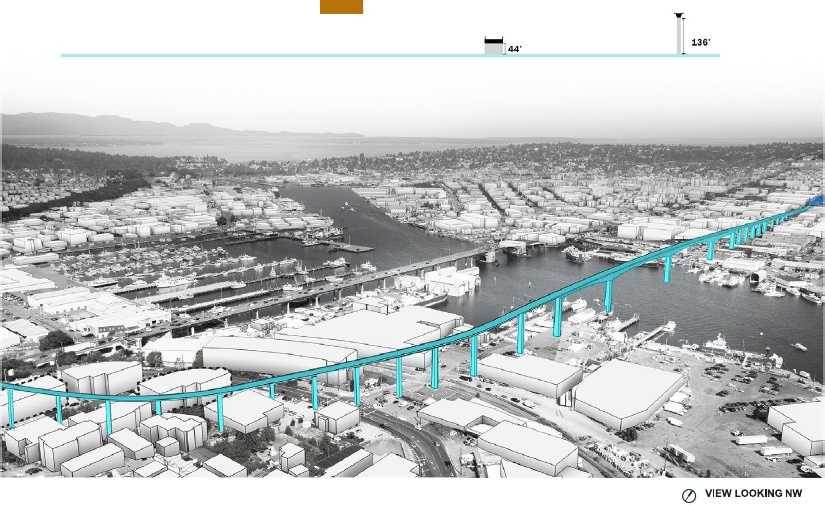
Sound Transit has projected ridership would be similar across scenarios, which is a little surprising given that the analysis also finds greater population and job density near a station sited at 20th Ave NW. Arguably, a 15th Ave NW station would provide the best bus connections perhaps compensating for lower density in the area. That said, I’d still wager a 20th Ave NW Station would generate greater ridership–and deeper study may indicate that too. The development opportunities are also considerable.
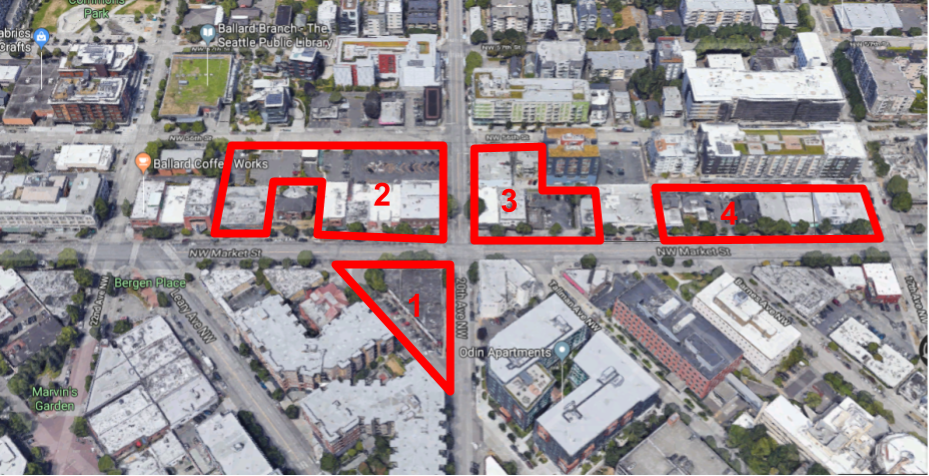
While Ballard is rapidly redeveloping, many of the parcels near 20th Ave NW are still low-slung retail. One can envision a station site composing two or three of the four corners at the intersection, putting entrances on both sides of Market Street and then building mixed-use, mixed-income towers above them. While expensive, an underground station would mean greater redevelopment opportunity since more land would need to be acquired to mine the station and then surplussed once complete–potentially to nonprofit developers.
West Seattle Options: Let’s Get Elevated
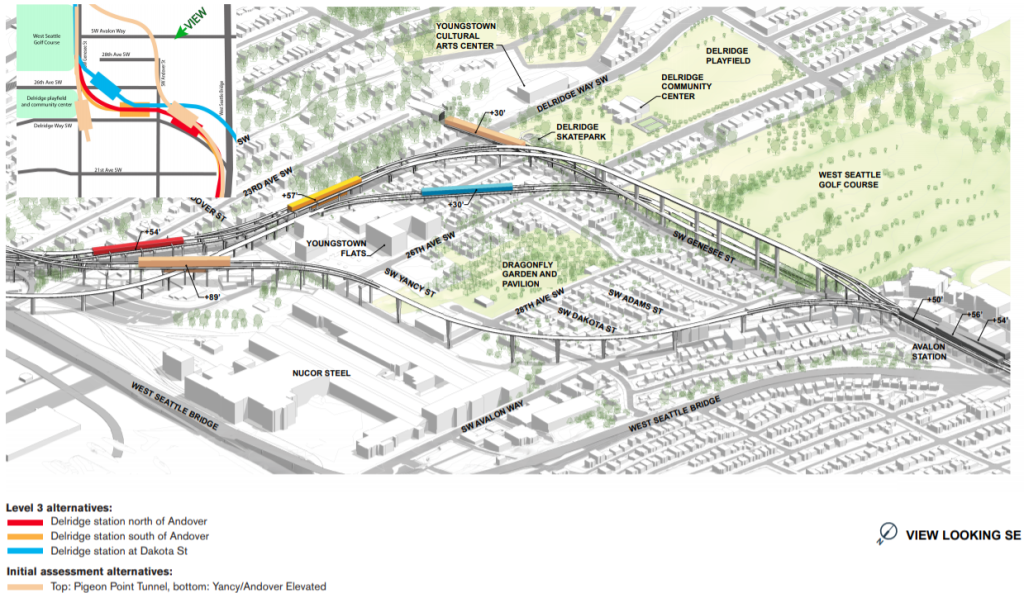
In West Seattle, the Elected Leadership Group asked Sound Transit to study a Pigeon Point Tunnel, but the Initial Assessment results do not suggest this is a very promising option. The Pigeon Point tunnel alone adds another $200 million in costs, but it must be paired with the $700 million Junction tunnel. Finding $900 million in third-party funding for optional tunneling work appears nearly impossible, especially in light of lack of major operational advantages and other ways that transit money could be spent.
Sound Transit does note Pigeon Point positives like a direct, less steep route with a more accessible Delridge Station, but in light of the high cost and design risks, it’s doesn’t appear to be a viable option.
The Yancy/Andover Elevated alignment was added late in the game, and it has some potential advantages–it lessens “potential residential effects overall, but increases [them] along Avalon Way.” However shifting Delridge Station so far to the north is a big drawback, as are a curvy alignment with some highly elevated sections. (We’re not building a rollercoaster here.) The cost estimate is similar to the Representative Project.
That leaves the existing West Seattle Elevated alternative with the Delridge Station south of Andover Street as the strongest option. Sound Transit projects the cost will be similar to the Representative Project while improving bus integration and redevelopment potential. Ridership is comparable to other options at a fraction of the cost.
SoDo Options: At-Grade with Overpasses
SoDo is another place where the Initial Assessment took a closer look, after some lackluster earlier options–the Representative Project has been eliminated in SoDo. Sound Transit is looking at a double elevated option, a half-elevated option, and an at-grade option with overpasses. Long story short, the double elevated option appears too expensive and complicated, so the at-grade might actually be the best since it’d save $200 million dollars over the Representative Project while minimizing construction impacts to light rail operations. Those savings could then be dedicated toward crucial improvements to other segments in Seattle.
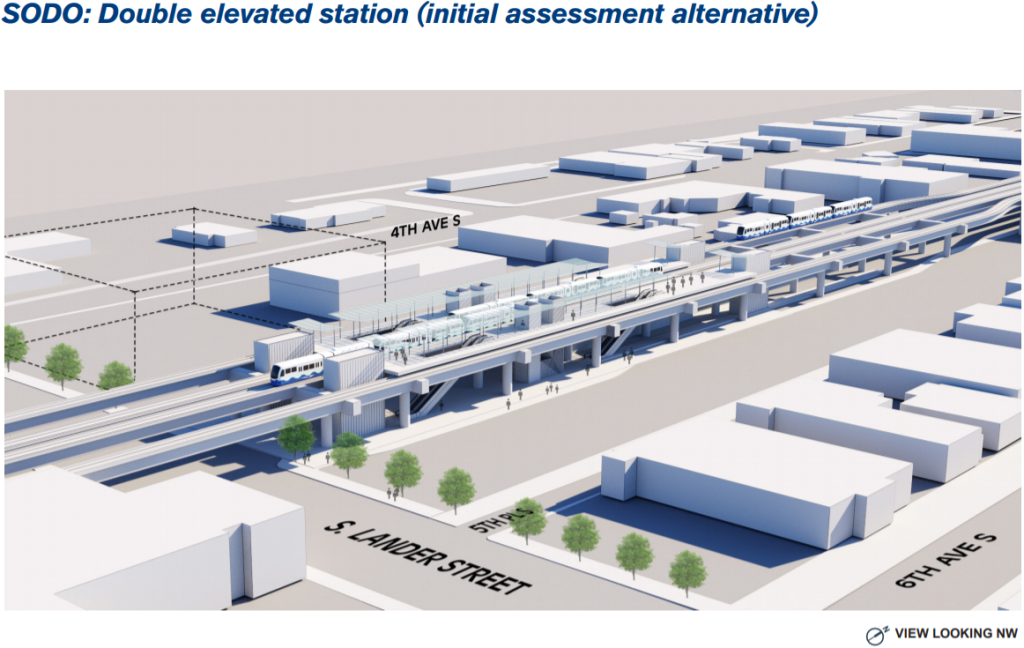
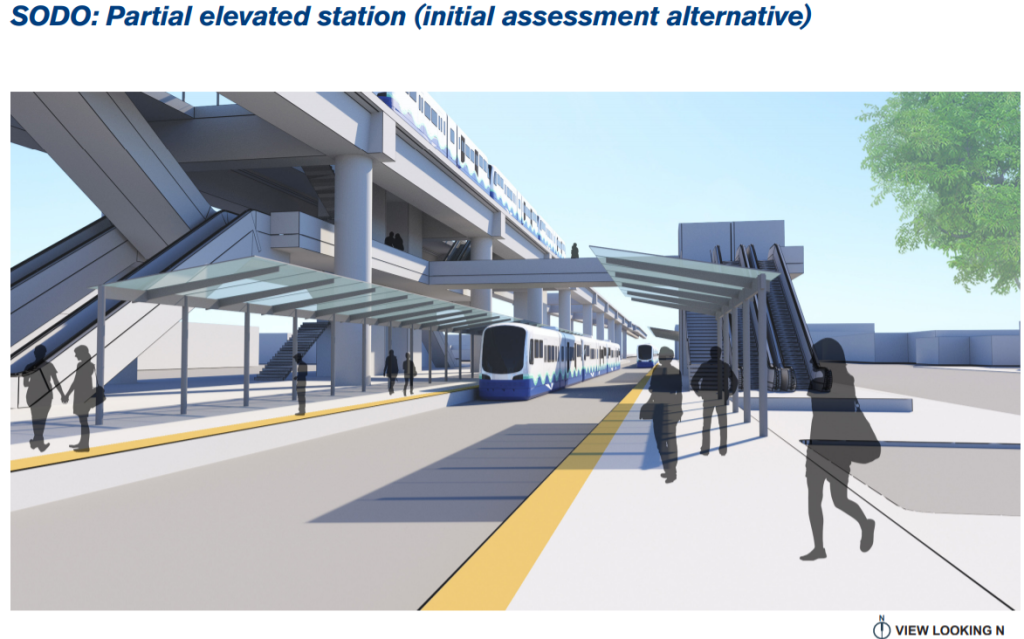
To understand the importance of the SoDo decision, it’s important to think about the reliability of the whole network. Both the Green Line (Ballard to Tacoma) and the Red Line (West Seattle to Everett) will run through SoDo. Disruptions in SoDo, such as those caused by collisions at at-grade crossings, could hamper the whole system. That makes the double elevated option a seductive choice, but the other options could mostly accomplish the same things.
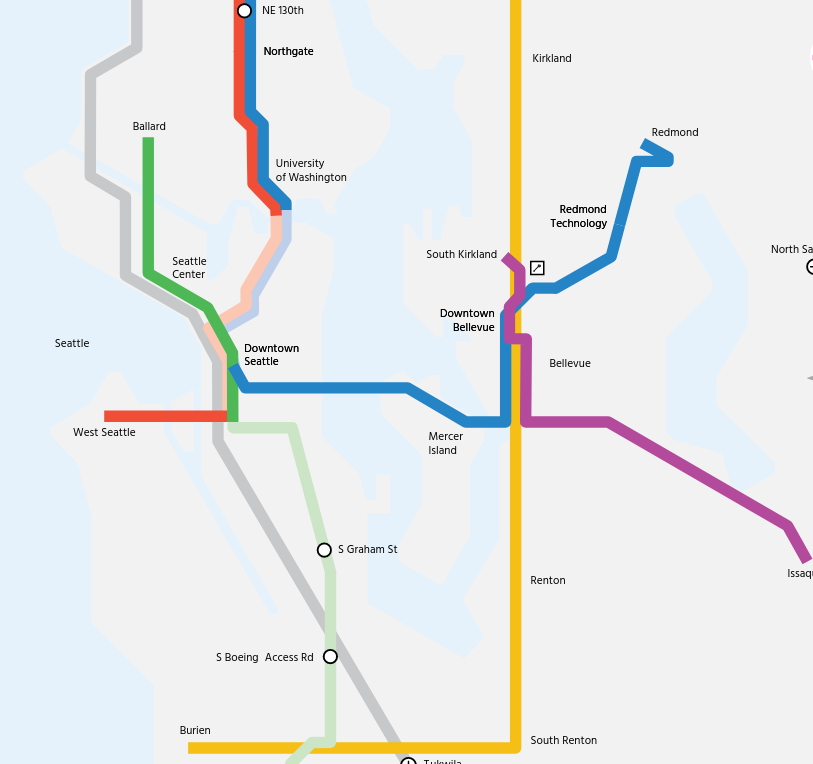
The at-grade option uses overpasses to span Lander Street and Holgate Street, the two major streets in the vicinity. Sound Transit didn’t specify how much these overpasses cost, although one would imagine it is significant given the $102 million budget for the Lander Street Overpass between 1st Ave S and 4th Ave S. Still, it clearly is less than elevated track throughout the SoDo section given the overall cost estimates. Advocates like Seattle Subway have been adamant that no light rail-automobile interactions should exist to improve safety and prevent crash-related delays. If the at-grade option can do that, it’d be a great option and a good way to save some money.

The downside of the at-grade option is losing the SoDo Busway, which could be a hit to bus reliability for routes using it. The good news is that fewer buses will rely on the SoDo Busway as more routes are truncated to connect to light rail throughout the region. Still some buses would use it if it was there. The partially elevated option would maintain the SoDo Busway and offer some nice opportunities for bus integration while costing a similar amount to the Representative Project, according to the Initial Assessment. The existing at-grade crossing of Lander Street would remain in the half-elevated option, but the Holgate overcrossing would eliminate interactions with automobile traffic at that intersection.

Another unanswered question: what happens to the SoDo Trail? Although only one-mile-long, the trail is a handy way for cyclists and pedestrians to bypass traffic, particular rush hour and post-game mayhem in the area. Sound Transit rates all SoDo options as “medium” on both bike accessibility and pedestrian accessibility, suggesting whatever it has in mind is the same across scenarios.
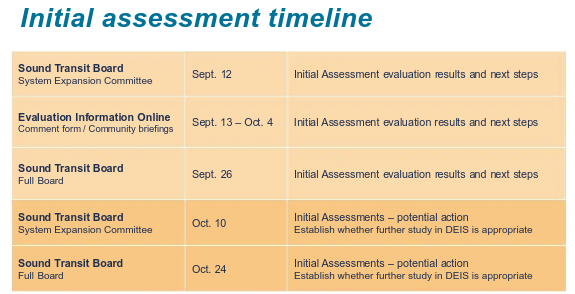
Piecing together the segments, elevated to West Seattle Elevated, SoDo at-grade, and a 20th Ave tunnel in Ballard, leaves us only a quarter billion over budget. If Seattle is forced to come up with $250 million in third-party funding to make that happen, that seems doable, especially with the selling point of connecting the heart of Ballard to the light rail network.
People have until October 4th to comment on the Initial Assessment. The Sound Transit Board may make its final cuts and kick off the Draft EIS on October 24th if all goes according to plan.
Doug Trumm is publisher of The Urbanist. An Urbanist writer since 2015, he dreams of pedestrian streets, bus lanes, and a mass-timber building spree to end our housing crisis. He graduated from the Evans School of Public Policy and Governance at the University of Washington in 2019. He lives in Seattle's Fremont neighborhood and loves to explore the city by foot and by bike.

